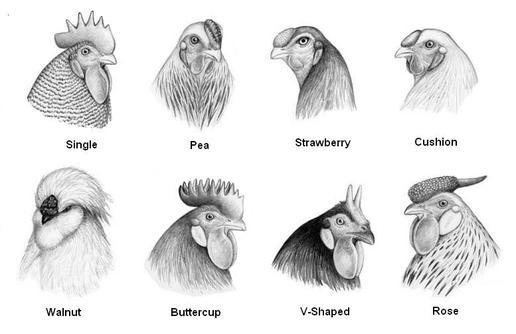
What are they for?
We can tell an enormous amount about a chicken by their comb and wattle. They are essentially a way for the chicken to keep cool. They are red because of the circulation of the blood, so as the blood goes through the comb it is cooled by the air and thus keeps the chicken from over heating.
Some breeds are prone to frost bite on their combs during winter. This can appear as a dark discolouration which may be confused with more serious illnesses. Applying Vaseline to their comb during the colder months will give some protection against the frost.
Combs also indicate how old the chicken is and whether they are going start laying for the first time. Small, slightly pale combs indicate a juvenile pullet who is not ready for egg laying. The sign that they are coming into laying is when their comb develops a strong red colour and increases in size.
Roosters' combs grow larger and have more of a dangle of the wattle compared to hens. Their combs are also a signal to one another of sexual maturity and for attraction. Colour and size of combs and wattles may also determine the pecking order of the flock. When introducing new hens to the existing flock take note of how strongly red the combs become on the existing flock.
Combs and Health
Since the comb and wattle are supplied with a circulation of blood, they give us a very good indication as to the chickens' overall health. One of the first signs of illness is often detected in the wattle.
Signs to watch for include:
- Floppy
- Pale
- Dry
- Scabby
- Enlarged/Swollen
- Split
- Patchy spots
If any of this signs occur please contact your local vet immediately. Chickens can deteriorate at a rapid rate.
Check that your flock has access to clean water as this can also be a sign of hydration stress. Since their combs are primarily for cooling the body, the lack of hydration directly affects the blood circulation.
Wattles
The development of the wattle in colour and size is affected by the secretion of the sex hormones. Similar to the comb, when they grow and begin to have a floppiness to them this indicates that they are coming into their egg laying.
Back to Basic Living: http://backtobasicliving.com/blog/tag/comb-frost-bite/
There are 7 general styles.
(There can be variation on these due to cross-breeding.)
- Single
- Pea
- Strawberry
- Cushion
- Walnut
- Buttercup
- V-Shade
- Rose
♦ Other comb styles include Carnation (or Kings) and Silkie which is a variation of Walnut, etc.
Breed Combs
Single is the most common variety in most backyard chickens throughout Australia: Isa Brown, Australop, Barnvelder, Leghorns.
♦ Carnation is a variation of the Single, where the back of the comb is more extended. It tends to be a Spanish variation.
Pea combs are a characteristic of the Araucanas, Ameraucanas, Aseels, Brahmas, Buckeyes, Cornish, Sumatras and Shamos.
Strawberry are found on Malay and Yokohama breeds.
Cushion comb is a characteristic of Chanteclers.
Walnut is a genetic result of breeding rose and pea comb breeds. Typically found on Silkies.
♦ Silkie is a variation of the Walnut, which is said to be a second type of Rose comb. Developed from breeding a Single with a Rose Comb. Found in some Silkies.
Buttercup is shaped like a crown which is typical of the Sicilian Buttercup breed.
V-shape is also known as 'V-comb', 'Horn comb' and 'Antler comb'. Typical of the Crevecoeurs, Houdans, La Flèche, Polish, and Sultans.
Rose combs are found on Dominiques, Hamburgs, Red Caps, Sebrights, and Wyandottes.
♦♦There are variation of the Rose found in Leghorns, Black and White Minorcas, Rhode Island Reds and Rhode Island Whites.
BOTTOM: Derbyshire Redcap rooster with a giant rose comb, and a Dark Brahma rooster with a Pea Comb.

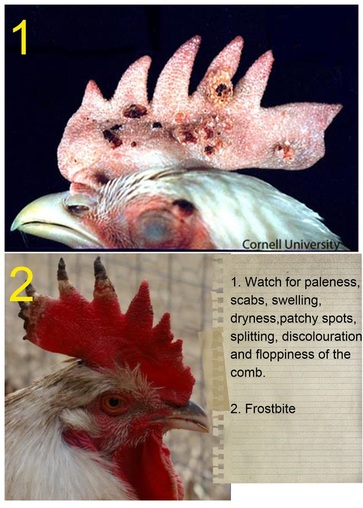
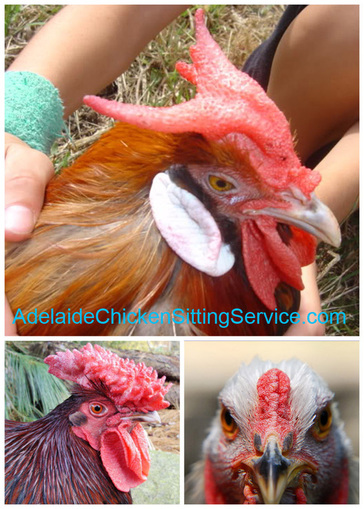
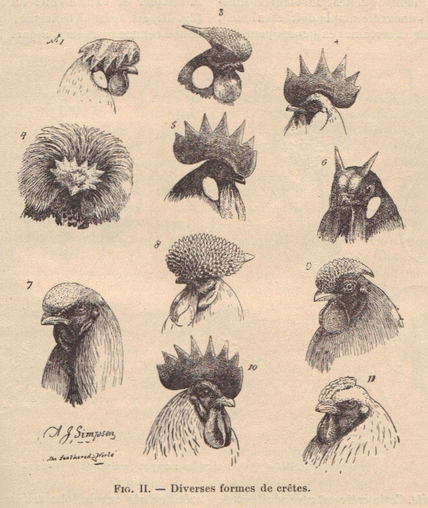
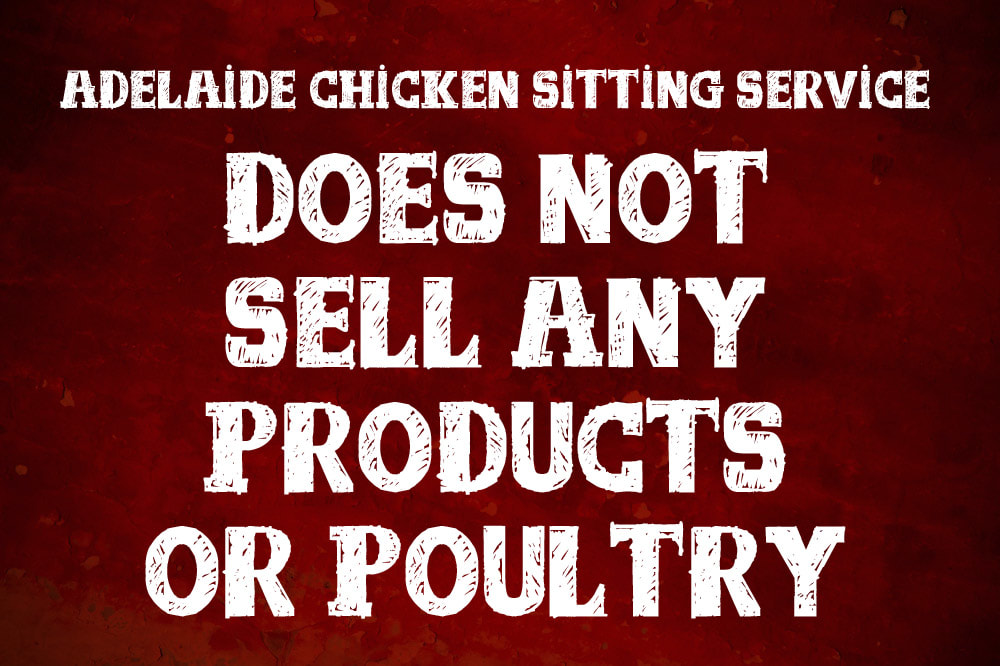

 RSS Feed
RSS Feed